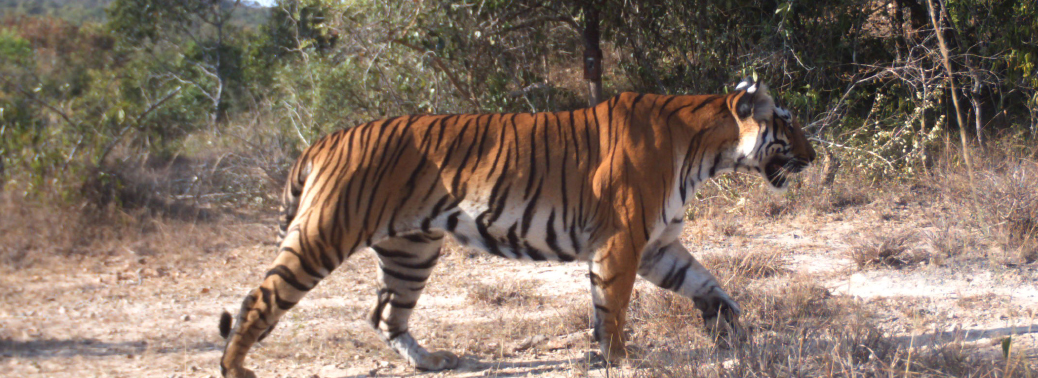SHRINKING BUFFER ZONE AT SATHYAMANGALAM TIGER RESERVE
28, Sep 2019

Prelims level : Environment
Mains level : GS-III- Conservation, environmental pollution and degradation, environmental impact assessment.
Context:
- Satyamangalam Tiger Reserve (STR) that registered the highest growth in tiger numbers in the country the last four years, will have no eco-sensitive zone (ESZ) or at the most just one kilometre, around its boundary.:
- According to a draft notification, the extent of ESZ varies from zero to one kilometer around the tiger reserve.
- Activists in the western region are alike in their opinion that the reduction of ESZ from the default 10 km radius to zero kilometre was to help the mining lobby.
About STR and Why Is It So Critical?
- Sathyamangalam Wildlife Sanctuary and Tiger Reserve is a protected area and tiger reserve along the Western Ghats in the Erode District of Tamil Nadu.
- First declared as a wildlife sanctuary in 2008 and enlarged in 2011, it covers a forest area of 1,411.6 km2 (545.0 sq mi) and is the largest wildlife sanctuary in Tamil Nadu.
- In 2013, it became the fourth tiger reserve as a part of Project Tiger in the state of Tamil Nadu.
- The notification itself states that the STR is highly critical to accommodate the spill-over population of tigers from the Mudumalai, Bandipur Tiger Reserves and Nilgiri North Forest Division through Moyar valley on one hand, and similarly, the BTR Tiger Reserve and Kollegal Forest Divisions connecting on the other side with the Hassanur Range.
- STR acts as a bridge between the two major landscapes, the Western Ghats and the Eastern Ghats, ensuring a vast territory for tigers, and thus enhancing long-term conservation measures through exchange of genes between meta populations.
- Therefore, considering the ecological and conservation value of wildlife wealth, it is necessary to conserve and protect the area around the STR as ESZ, for the better management and protection of wildlife, especially tigers.
Eco-Sensitive Zone (ESZ):
- Eco-Sensitive Zones (ESZs) or Ecologically Fragile Areas (EFAs) are areas notified by the Ministry of Environment, Forests and Climate Change (MoEFCC), Government of India around Protected Areas , National Parks and Wildlife Sanctuaries.
- The Environment Protection Act, 1986 does not mention the word “Eco-sensitive Zones”.
- The section 3(2)(v) of the Act, says that Central Government can restrict areas in which any industries, operations or processes or class of industries, operations or processes shall not be carried out or shall be carried out subject to certain safeguards
- Besides the section 5 (1) of this act says that central government can prohibit or restrict the location of industries and carrying on certain operations or processes on the basis of considerations like the biological diversity of an area, maximum allowable limits of concentration of pollutants for an area, environmentally compatible land use, and proximity to protected areas.
- The above two clauses have been effectively used by the government to declare Eco-Sensitive Zones or Ecologically Fragile Areas (EFA).
- The MoEF (Ministry of Environment & Forests) has approved a comprehensive set of guidelines laying down parameters and criteria for declaring ESAs. A committee constituted by MoEF put this together.
- The guidelines lay out the criteria based on which areas can be declared as ESAs. These include Species Based (Endemism, Rarity etc), Ecosystem Based (sacred groves, frontier forests etc) and Geomorphologic feature based (uninhabited islands, origins of rivers etc).






